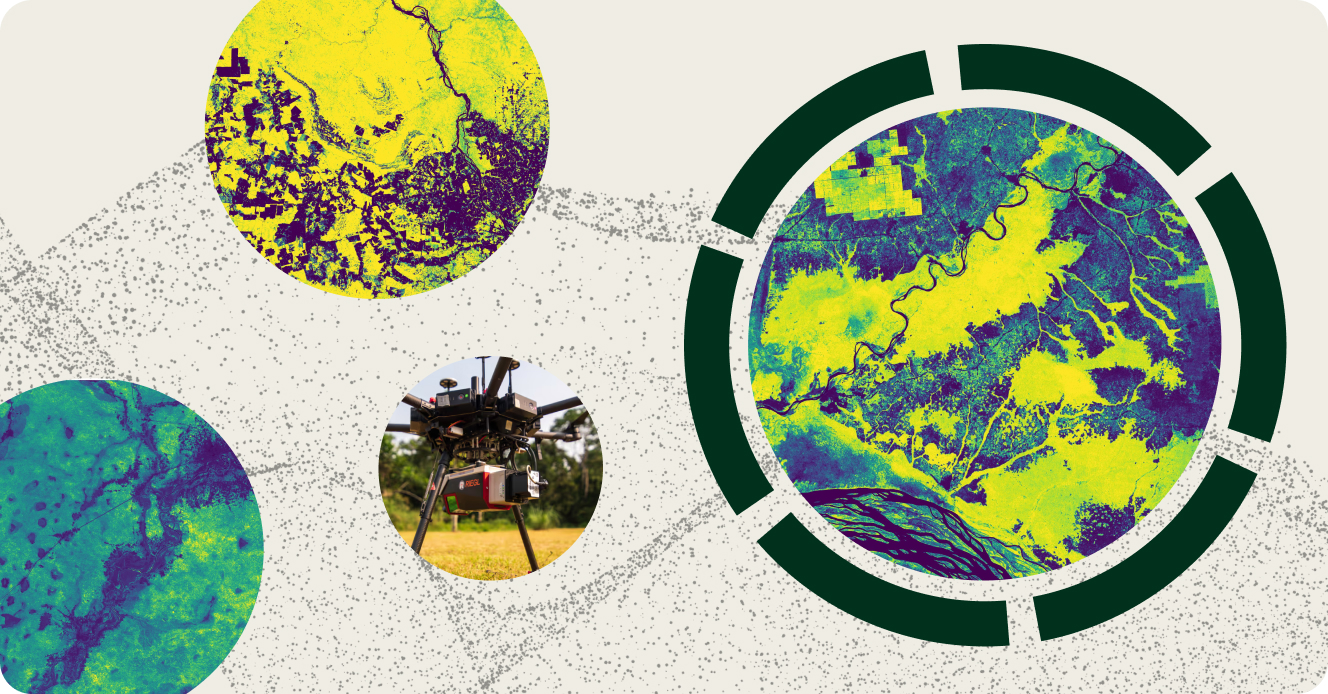“Over the years we’ve invested significantly in our field data team - focusing on producing trusted ratings. While this ensures the accuracy of our Ratings, it doesn’t allow the scale across the thousands of projects that buyers are considering.”
For more information on carbon credit procurement trends, read our "Key Takeaways for 2025" article. We share five, data-backed tips to improve your procurement strategy.

One more thing: Connect to Supply customers also get access to the rest of Sylvera's tools. That means you can easily see project ratings and evaluate an individual project's strengths, procure quality carbon credits, and even monitor project activity (particularly if you’ve invested at the pre-issuance stage.)
Book a free demo of Sylvera to see our platform's procurement and reporting features in action.
The need for carbon project validation and financial backing is critical, to meet the scale and quality needed for decarbonisationThere are two solutions: Green bonds, such as those endorsed by the European Green Bond Standard (EU GBS), and investment in pre-issuance carbon projects, which allows investors to support green projects in exchange for the carbon credits said projects produce. We'll focus on the latter solution.
According to MSCI Carbon and our recent Supply and Demand Survey, demand for high-quality carbon credits is likely to outstrip supply 2:1 (in the low demand case).
We've seen in our recent Q1 2025 Carbon Data Snapshot that 2025 marks the first year where negative net issuances are set to occur, i.e. where more credits are retired than issued.
In response to this need, pre-issuance reviews are growing in popularity.
Pre-issuance refers to the phase of a carbon project before the issuance of carbon credits. You might also hear it referred to as "ex-ante," which means "before the event".
Pre-issuance allows project developers to validate their methodologies, attract necessary funding, and ensure compliance with international standards before carbon credits are issued. It also allows forward-thinking corporate buyers and investors to secure supply at the right price, to either retire for their own needs, or sell in the future.

Pre-issuance is a vital stage in the carbon project lifecycle, acting as the bridge between initial project conception, and the full-scale issuance of carbon credits. And for investing companies it means that they can secure access to the best projects, control quality, and reduce costs.
Although it's not without its challenges…
The risks of pre-issuance projects
There is more uncertainty with pre-issuance projects compared with established and vetted carbon projects, such as:
- Execution risk:
It may take a number of years for a pre-issuance project to actually deliver credits to the market, and essentially an investor bases their decision on a plan to be implemented. The implementation doesn't always go according to plan. For instance, timelines can be changed and unforeseen obstacles may arise. - Evolving policy landscape:
Given these long timeframes, the projects fall risk to constantly evolving scientific, policy, and market landscapes. - Risk of non-delivery:
Pre-issuance projects are yet to deliver their credits, and hence there is the possibility that a project either underdelivers, or does not deliver at all.
So while investors would assess the risk profile of a project in that given moment in time, the timelines of pre-issuance projects mean that they are highly susceptible to change as the project progresses and takes shape.
This is where Pre-Issuance Ratings come in.
The risks of pre-issuance projects
Compared to established and vetted carbon projects, pre-issuance projects carry more risk and uncertainty. For example, those that invest in pre-issuance projects deal with:
- Execution risk: It may take a number of years for a pre-issuance project, such as a renewable energy initiative, to deliver credits to the voluntary carbon market. Investors base their investment decision on a plan to be implemented. Sadly, the implementation doesn't always go according to plan. For instance, timelines can be changed and unforeseen obstacles may arise.
- Evolving policy landscape: Given these long timeframes, projects fall risk to constantly evolving scientific, policy, and market landscapes.
- Risk of non-delivery: Pre-issuance projects are yet to deliver their credits. Hence, there is the possibility that a project either underdelivers, or does not deliver at all.
While investors assess project risk profiles in real time, the timelines of pre-issuance projects mean that they are highly susceptible to change as the project progresses and takes shape.
This is where Pre-Issuance Ratings come in.
The need for pre-issuance reviews
Given the concerns associated with pre-issuance projects, investors must engage second party opinions to assess projects. Doing so will enable them to thoroughly evaluate the quality and integrity of a project, and reduce the risk involved.
Proper ratings ensure a project:
- Meets investor criteria
- Reduces risk associated with project failures or overestimated carbon reductions
- Provides remedial actions in such cases when emerging risk is identified
- Verifies the integrity of the credits they might be purchasing in the future.
Failing to source a Pre-Issuance Rating from a credible third party leaves investors grappling with information asymmetry – complicating the process of identifying, evaluating, and comparing quality projects. The result? A more challenging experience for market participants.
The benefits of Sylvera's pre-issuance ratings
Sylvera is a leading provider of Pre-Issuance Ratings, packaged as part of our end-to-end Pre-Issuance solution that provides tools, data services, and expertise so investors can navigate the pre-issuance investment journey.
Our Pre-Issuance Ratings cover the following risks:
- Integrity: Evaluating the potential drivers of compromised carbon credit quality and project integrity across additionality, carbon accounting, permanence, safeguards, and co-benefits.
- Delivery: Analyzing the present and potential sources of non-delivery or under-delivery of carbon credits.
- Reputational: Surfacing the reputational implications of the project, proponent(s), project type, methodology, and data disclosures.
This is done by breaking down the assessment into our 3 key modules:
- Integrity: What rating this project is expected to receive at issuance
- Delivery: How credits will be issued and when
- Value: How this translates into money using our price rating correlation.
And across these 3 modules, remedial actions provide guidance on how to improve the project's quality and value based on our in-depth analysis.

Understanding Pre-Issuance
Before buying and carrying out a Pre-Issuance Rating, it's worth having a good understanding of the pre-issuance process in general.
This diagram outlines the way a carbon credit becomes available for purchase and retirement—whether said project aims to boost energy efficiency, sequester GHG emissions, or something else.

It can take years for a project to get from the initial ideation, planning, and development phase to the stage where it can actually deliver credits to the market. And there are several variables over this time that need assessing and monitoring.
Because of these things, pre-issuance ratings are vital to not only launch new environment and sustainability-related projects, but draw interest and financial backing from investors.
Get started
Investing in pre-issuance carbon projects offers significant opportunities but also presents challenges. Sourcing reliable projects, assessing their risks, and monitoring their implementation can be complex and time-consuming for any project developer or investment finance team.
Pre-Issuance with Sylvera addresses these challenges head-on, providing a comprehensive way to streamline your entire investment lifecycle.
To learn more about Pre-Issuance Ratings, download the Pre-Issuance Primer.















